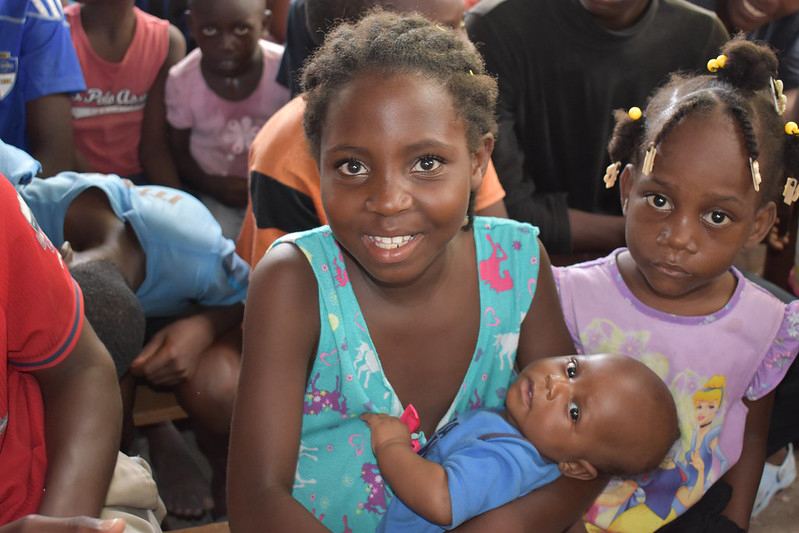
For more than two decades, the Berkeley, California–based What If? Foundation has worked with the Na Rive community development program in Haiti to develop Haitian-led programs to provide food assistance, educational opportunities, and disaster relief to the residents of Port-au-Prince’s Ti Plas Kazo community.
This project supports the Lamanjay Food Program, funding the purchase of food and cooking supplies, providing stipends to workers who prepare and serve meals, and procuring storage space for dry goods. Na Rive’s community cafeteria serves up to 500 hot, nutritious meals each day; for the children and families served here, the meals provided are often their only food of the day. The project also provides lunches for 450 to 550 students and staff members of the Father Jeri School, which was partly furnished and equipped with BGR assistance. A food pantry serves an additional 60 families each week, and mobile food distributions to additional neighborhoods outside of the Ti Plas Kazo community serve up to 100 more people per week—in total, Lamanjay serves nearly 2,000 hungry people each day. Annually renewable project.

For more than two decades, the Berkeley, California–based What If? Foundation has worked with the Na Rive community development program in Haiti to develop Haitian-led programs to provide food assistance, educational opportunities, and disaster relief to the residents of Port-au-Prince’s Ti Plas Kazo community.
This project supports the Lamanjay Food Program, funding the purchase of food and cooking supplies, providing stipends to workers who prepare and serve meals, and procuring storage space for dry goods. Na Rive’s community cafeteria serves up to 500 hot, nutritious meals each day; for the children and families served here, the meals provided are often their only food of the day. The project also provides lunches for 450 to 550 students and staff members of the Father Jeri School, which was partly furnished and equipped with BGR assistance. A food pantry serves an additional 60 families each week, and mobile food distributions to additional neighborhoods outside of the Ti Plas Kazo community serve up to 100 more people per week—in total, Lamanjay serves nearly 2,000 hungry people each day. Annually renewable project.

